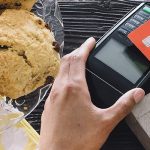A microcomputer is a compact, fully functional computer intended for individual use. Although the term is somewhat outdated, it is now commonly referred to as a personal computer (PC). Modern examples of microcomputers include laptops and desktops. These devices represent complete computing systems smaller than traditional PCs, such as single-board computers (SBCs).
Unlike mainframes or minicomputers, which consist of multiple components, microcomputers utilize a single integrated semiconductor chip for their central processing unit (CPU). They also include RAM, input/output (I/O) ports, and a wiring system, all organized within a single unit, typically known as a motherboard. Common I/O devices encompass keyboards, monitors, printers, and external storage units.
The Evolution of Microcomputers
The term “microcomputer” originated in the 1970s. Prior to that era, computers were primarily mainframes, vast setups that could occupy an entire room and comprised numerous racks of equipment. These mainframes distributed CPU tasks across multiple chips and logic boards, often weighing several tons. Minicomputers emerged later, fitting into a single rack and weighing only hundreds of pounds, yet they still divided processing tasks among various components.
The breakthrough that led to the development of microcomputers was the creation of the microprocessor, which places the entire CPU onto a single integrated circuit (IC). The Intel 4004, introduced in 1971, was the first mainstream microprocessor, followed by the Intel 8008 and Intel 8080 in 1972 and 1974, respectively. This innovation allowed computers to be compact enough to fit on a desk and weigh only a few tens of pounds.
The first microcomputer was the Micral, launched in 1973 by Réalisation d’Études Électroniques, and based on the Intel 8008. It was the first non-kit microcomputer built around a microprocessor. The Intel 8008-based MCM/70, released by Micro Computer Machines Inc. in 1974, followed. Although released later, the Altair 8800 is often hailed as the first commercially successful microcomputer. Designed by Micro Instrumentation Telemetry Systems in 1974 and based on the Intel 8080, it retailed for about $400 as a kit and $600 fully assembled (equivalent to approximately $2,550 and $3,826 today).
As microprocessor technology evolved, so too did the processing capabilities of microcomputers. By the 1980s, microcomputers transcended gaming and recreational uses, becoming integral in personal computing, workstations, and education. By the 1990s, they had evolved into compact personal digital assistants, eventually paving the way for smartphones and portable music devices.
Applications of Microcomputers
Microcomputers serve various functions in both personal and professional settings. They are widely used in education and entertainment, extending beyond laptops and desktops to include video game consoles, computerized devices, and smartphones.
In the workplace, microcomputers perform a multitude of tasks, such as data processing, word processing, creating spreadsheets, graphic design, communications, and managing databases. They are employed in business for bookkeeping, inventory management, and communication. In medical environments, they help record patient information, manage healthcare plans, schedule appointments, and process data. Financial institutions utilize microcomputers for transaction records, billing tracking, and financial reporting. They also find applications in military setups for various training tools, among many others.
Microcomputers and the Internet of Things (IoT)
Today, the term microcomputer is commonly used for compact computing systems that can run an entire operating system, smaller than traditional laptops or desktops. These include SBCs and specialized PC formats like handheld computers.
The Raspberry Pi is the most prominent SBC, widely utilized for prototyping in IoT, education, and various applications. It is joined by numerous other SBCs, each featuring unique characteristics, such as the Nvidia Jetson. These microcomputers can be further miniaturized into computer module form factors, seamlessly integrating into larger systems to serve as their processing cores.
While microcomputers and microcontrollers can perform similar tasks in IoT applications, specific smart devices (like TVs, refrigerators, and connected home appliances) are occasionally referred to as microcomputers.
Position of Microcomputers in the Computer Hierarchy
The general hierarchy of computer types is as follows:
- Embedded systems: Fixed computing systems without direct human interaction, yet meeting microcomputer criteria.
- Microcomputers: Typically single-board computers.
- Workstations: More powerful PCs designed for specialized uses.
- Minicomputers: Now referred to as midrange servers.
- Mainframes: Generally labeled large servers or server racks by manufacturers.
- Supercomputers: Large servers capable of parallel processing.
- Parallel processing systems: Networks of interconnected computers sharing concurrent tasks on the same application.
Distinctions Between Microcomputers and Other Technologies
Microcontroller vs. Microcomputer: A microcontroller is an integrated circuit (IC) tailored for specific functions within an embedded system. Microcontrollers typically run on low power, executing compiled programs stored on the chip, and are often described as single microcomputers.
Microprocessor vs. Microcomputer: A microprocessor is a computing processor embedded in a microchip containing most CPU functions but lacking RAM, ROM, or peripherals. Microprocessors cannot perform independent tasks; they are part of a microcomputer, which encompasses all the additional components necessary to create a complete computer. Thus, a microcomputer can be defined as a combination of a microprocessor along with its peripherals, functioning circuitry, and memory.
Microcomputers vs. Minicomputers: While microcomputers generally refer to devices like laptops or desktops, minicomputers were prevalent from the 1960s to the 1980s. Minicomputers were larger, sometimes exceeding six feet in height and weighing up to 700 pounds, yet they offered higher processing speeds at a lower price than mainframes or supercomputers. Whereas microcomputers found use at home and in offices, minicomputers were typically used in academic institutions, research labs, and small companies for tasks like accounting and educational purposes.
Microcomputers vs. Mainframes: Mainframe computers are designed for extensive computing tasks that prioritize performance, security, and the ability to handle multiple simultaneous user requests, unlike microcomputers, which primarily serve individual users. Essentially, mainframes are systems that interconnect numerous microcomputers.
The history of information technology (IT) extends far beyond the inception of modern computers. For more insight, explore a brief history of IT evolution, delve into server hardware history, and keep up with IoT trends.









